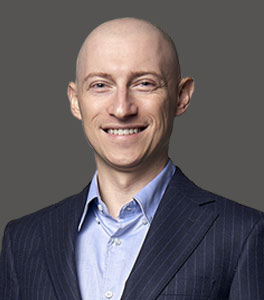

Mohs surgery or other removals of skin cancer from the face, head or neck may involve significant soft-tissue loss and damage to the facial structure. The defects that are created may require skin grafting or complex facial flaps to help restore form and function. To restore aesthetics to the facial features, reconstructive surgery is needed. This surgery is performed by a skilled facial plastic surgeon in New York City Dr. Gary Linkov at City Facial Plastics.


Once the our surgeon removes entire Mohs skin cancer, a defect is left in the skin. The defect can consist of only the top-most layers of skin or may extend deeper into the subcutaneous tissue and sometimes may involve muscle, cartilage, nerve, and other important structures. The defect then needs to be closed. The way in which the Mohs skin cancer surgery defect is closed, or repaired, is dependent on the defect location and size, patient comorbidities and preference, and surgeon preference.
Skin cancers can be removed using several different techniques. Historically, the surgeon would remove the visible cancer and a surrounding area of normal-appearing tissue and send it to the laboratory for evaluation under the microscope. The intended outcome would be that all the sampled normal-appearing tissue is in fact free of cancer on closer inspection. Then came along Mohs surgery for skin cancer, performed by specialized dermatologists, which is able to yield incredibly high cure rates while also conserving the maximum amount of normal tissue due to this specialized surgical technique.
Any person who undergoes Mohs skin cancer surgery for the removal of skin cancer is a candidate for Mohs surgery repair. The options for repair are discussed below.
The approach to Mohs surgery repair is often thought of as a reconstructive ladder, in which the simpler options are considered first and the more complex options are reserved for the appropriate clinical scenario.
The Mohs surgery repair reconstructive ladder includes:
The most important principles of facial Mohs reconstructive surgery include:
There are a few steps you should take before your Mohs surgery repair in order to get the best results. These steps include:
On the day of your Mohs surgery repair, it is important not to eat or drink 2 hours before if the procedure is performed in the office and 6 hours before if performed under deep sedation in the operating room. The timing of the Mohs reconstructive surgery varies. Including time spent checking in to the doctor’s office, marking out the surgical sites, anesthesia injections, surgery, and recovery, you should plan to be at your doctor’s office or the surgical facility for at least 4 hours.
Mohs surgery repair recovery involves some degree of discomfort, bruising, swelling, and bleeding in the initial recovery phase lasting a few days up to 2 weeks. Sutures are often placed and may need to be removed at 5-7 days after surgery, depending on suture type and location on the face. Dressing and bolsters are frequently used to support skin flaps or other repairs. Specific instructions will be provided to you by the top-rated plastic surgeon in Midtown, Manhattan, Dr. Linkov, depending on which exact procedure(s) you undergo.
Risks and complications are specific to each type of Mohs surgery repair, but a general summary of complications is outlined below:
Most patients are happy to be cancer-free and most will find the results of their Mohs surgery repair to meet or exceed expectations. The ultimate results of surgery will depend on the initial defect, patient healing ability, and surgeon technique.
Insurance will most often cover Mohs surgery repair. Check-in advance with your insurance provider regarding the details of your healthcare plan. Please keep in mind that an experienced facial plastic surgeon in Manhattan, NY Dr. Linkov is an out-of-network provider, but does offer financing options. Even if the facility and anesthesia fees are covered by your insurance, the surgeon’s fee will be charged separately.
Sometimes your dermatologist who performs the Mohs reconstructive surgery may also repair the wound. For more delicate parts of the face, or depending on patient preference, a facial plastic surgeon may be asked to assist with the Mohs surgery repair.
Patients often search for the best Mohs reconstructive surgeon. Dr. Gary Linkov is a board-certified facial plastic surgeon in NYC specializing in facial cosmetic and reconstructive surgery. Best-in-class plastic surgeon in Manhattan’s Upper East Side, Dr. Linkov is a specialist with extensive experience treating all conditions of the face, including those that have been previously operated.
He is the Chief of Otolaryngology and Facial Plastic Surgery for the Veterans Hospital in Brooklyn, NY, where he operates on complex deformities on our country’s veterans. Dr. Linkov’s private practice in UES, Manhattan focuses on facial cosmetic and functional surgery, including Mohs surgery repair. You can view before and after photos of Dr. Linkov’s patients after Mohs repair below:
Surviving cancer is difficult enough without living with facial damage that can affect self-confidence in your appearance. If you are facing Mohs surgery or other cancer removals from the face or neck region, contact City Facial Plastics, located in Manhattan, NYC, today. We will schedule a consultation with an experienced facial plastic surgeon in New York, Dr. Linkov to discuss facial reconstructive options to improve your appearance after cancer surgery.
Dr. Linkov is an artistic and skilled doctor. He made me look and feel younger and more confident. He is friendly and warm. Responded to my phone calls and addressed all of my concerns immediately. My experience with his staff was very pleasant. There was no waiting time for the appointments. I greatly recommend Dr. Linkov.
Inna C

Dr. Linkov is a double board-certified by the American Academy of Facial Plastic and Reconstructive Surgery and the American Board of Otolaryngology-Head & Neck Surgery. A native of New York, Dr. Linkov graduated as a salutatorian from Cornell University and received his Medical Degree at Columbia University College of Physicians and Surgeons. Dr. Linkov conducted advanced head and neck cancer research at the world-renowned Memorial Sloan Kettering Cancer Center. Dr. Linkov is a former Adjunct Assistant Professor at New York University (NYU), where he taught Rhinoplasty.
Dr. Linkov is a top-rated facial plastic surgeon in New York who specializes in lip lift, facelift, rhinoplasty, and hair transplant. He has been named one of the top 5 lip lift surgeons in the United States, is listed in the prestigious SuperDoctors New York™ registry, and has appeared on the Dr. Oz Show, where he discussed the state-of-the-art hair transplantation procedure.


City Facial Plastics 150 E 56th St, #1AB, New York, NY 10022 (212) 439-5177